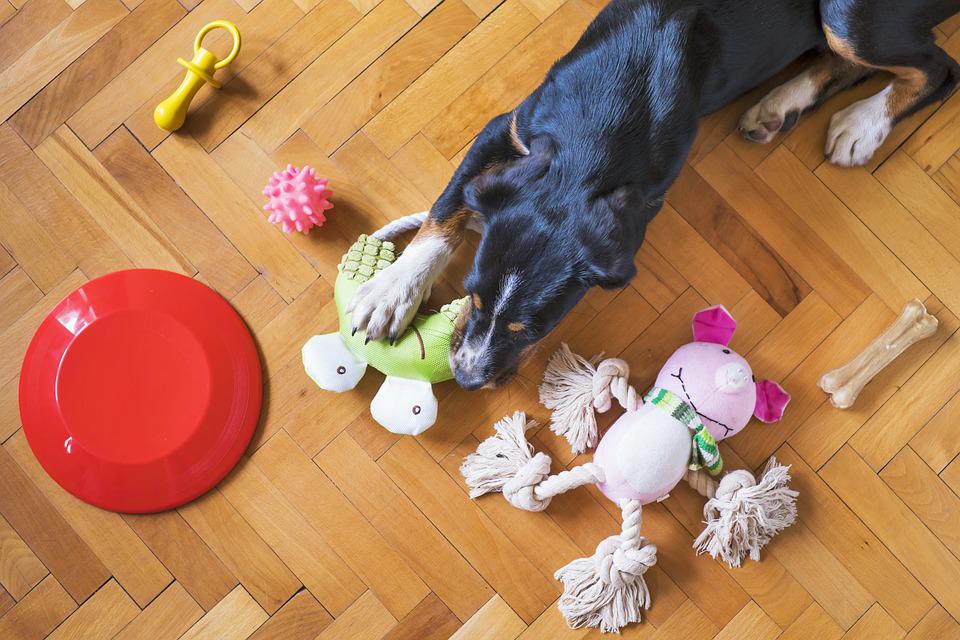Your Dog Doesn’t Like Toys?
Try These Tips
First things first; it’s okay if your dog is truly disinterested in toys. It doesn’t make them any less fun – or any less of a dog – if they don’t love a squeaky, ball, or Frisbee. However, your dog could still like toys, even if they don’t see seem hog wild about them. In many cases, they just haven’t found the right one yet, and there are reasons to keep trying to find a toy that makes them enjoy playtime.
 Play provides numerous benefits for dogs, such as:
Play provides numerous benefits for dogs, such as:
- Mental stimulation and enrichment
- Physical exercise
- Stress relief
- Positive chewing habits
- Relationship building with their owners
Play can even boost a dog’s confidence, and the right toy can provide comfort.
So, before you throw in the towel on toys, here are a few things to consider.
Consider Your Dog’s Traits
The first step in cracking the elusive “toy code” involves thinking about your dog’s breed traits and play styles – and you can do this even if they’re a mystery mix!
Generally speaking, toy preferences fall into the following categories:
- Tug toys: most dogs, but especially Terriers
- Squeaky toys: dogs with high prey drives, Terriers, Whippets, Huskies, and herding dogs
- Treat dispensing toys: most dogs, but especially food lovers like Labradors or Beagles
- Puzzle toys: highly intelligent dogs, like Border Collies, Papillons, and German Shepherds
- Chase and fetch toys: many dogs, especially herders and retrievers, like Goldens, Poodles, and Collies
Thinking about your dog’s natural instincts and play preferences can help you make the perfect toy love connection.
Not All Toys Are Equal
They say that variety is the spice of life, and that definitely goes for toys. But your dog may not love all of them. In fact, some dogs can be downright particular.
If your dog doesn’t seem interested in toys, try lots of new and different types, such as:
- Soft toys of various shapes, textures, and sizes
- Chase or fetch toys that encourage movement, like balls or lure toys
- Rope toys or flat options made for dragging or tugging
- Toys that make interesting noises, like crinkling, chirping, and honking
- Rubbery toys designed for chewing or licking
- Puzzle toys that put their brains to the test
Once you find some toys your dog enjoys, don’t forget to rotate them to avoid boredom.
Rethink Your Play Approach
Finally, it’s time to put it all together and explore your approach to playtime. Do you expect your dog to play on their own? Or just retrieve anything you throw? It could be time to try something new.
To start, some dogs don’t know how to play, so they don’t automatically understand that it’s fun and rewarding. If this could be your dog, you just have to work a little harder to pick a toy and play method that taps into their natural instincts.
For example, pick a toy and start trying to get them excited about it by moving it around on the floor like a small animal. If your dog starts to respond, keep the toy moving and interacting with them, either by letting them catch it or by playing a little tug. You can also reward interactions with toys with treats and even teach your dog to fetch!
When trying to play with your dog, pay close attention to how they respond. If they seem scared or nervous, move slower or try toys that aren’t noisy or bouncy – simple puzzle toys and activities that encourage nose work can be very beneficial for fearful dogs.
These are just a few ways to help your dog find the perfect toy. And remember, if your dog suddenly loses interest in toys, it’s time to schedule a visit with their vet.

